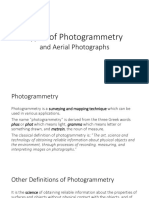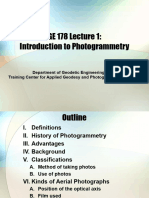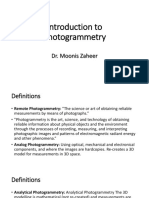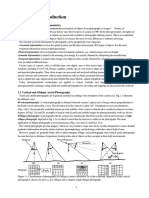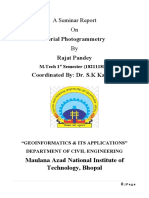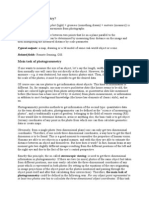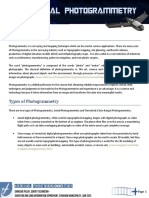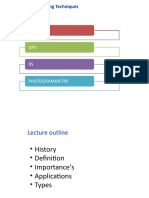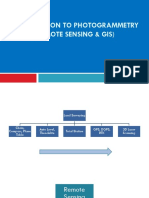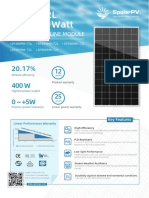0% found this document useful (0 votes)
71 views4 pagesIntroduction to Photogrammetry Basics
This lecture introduces photogrammetry, defining it as the measurement of physical objects using aerial photographs, with a historical overview from its origins in the 19th century to modern digital methods. It discusses the evolution of technology in photogrammetry, including the transition from analog to digital techniques and the types of photographs used, such as aerial and terrestrial images. The lecture emphasizes the applications of photogrammetry in creating 3D models and mapping, highlighting its significance in both military and civilian contexts.
Uploaded by
Aryan BadghareCopyright
© © All Rights Reserved
We take content rights seriously. If you suspect this is your content, claim it here.
Available Formats
Download as DOCX, PDF, TXT or read online on Scribd
0% found this document useful (0 votes)
71 views4 pagesIntroduction to Photogrammetry Basics
This lecture introduces photogrammetry, defining it as the measurement of physical objects using aerial photographs, with a historical overview from its origins in the 19th century to modern digital methods. It discusses the evolution of technology in photogrammetry, including the transition from analog to digital techniques and the types of photographs used, such as aerial and terrestrial images. The lecture emphasizes the applications of photogrammetry in creating 3D models and mapping, highlighting its significance in both military and civilian contexts.
Uploaded by
Aryan BadghareCopyright
© © All Rights Reserved
We take content rights seriously. If you suspect this is your content, claim it here.
Available Formats
Download as DOCX, PDF, TXT or read online on Scribd
/ 4



